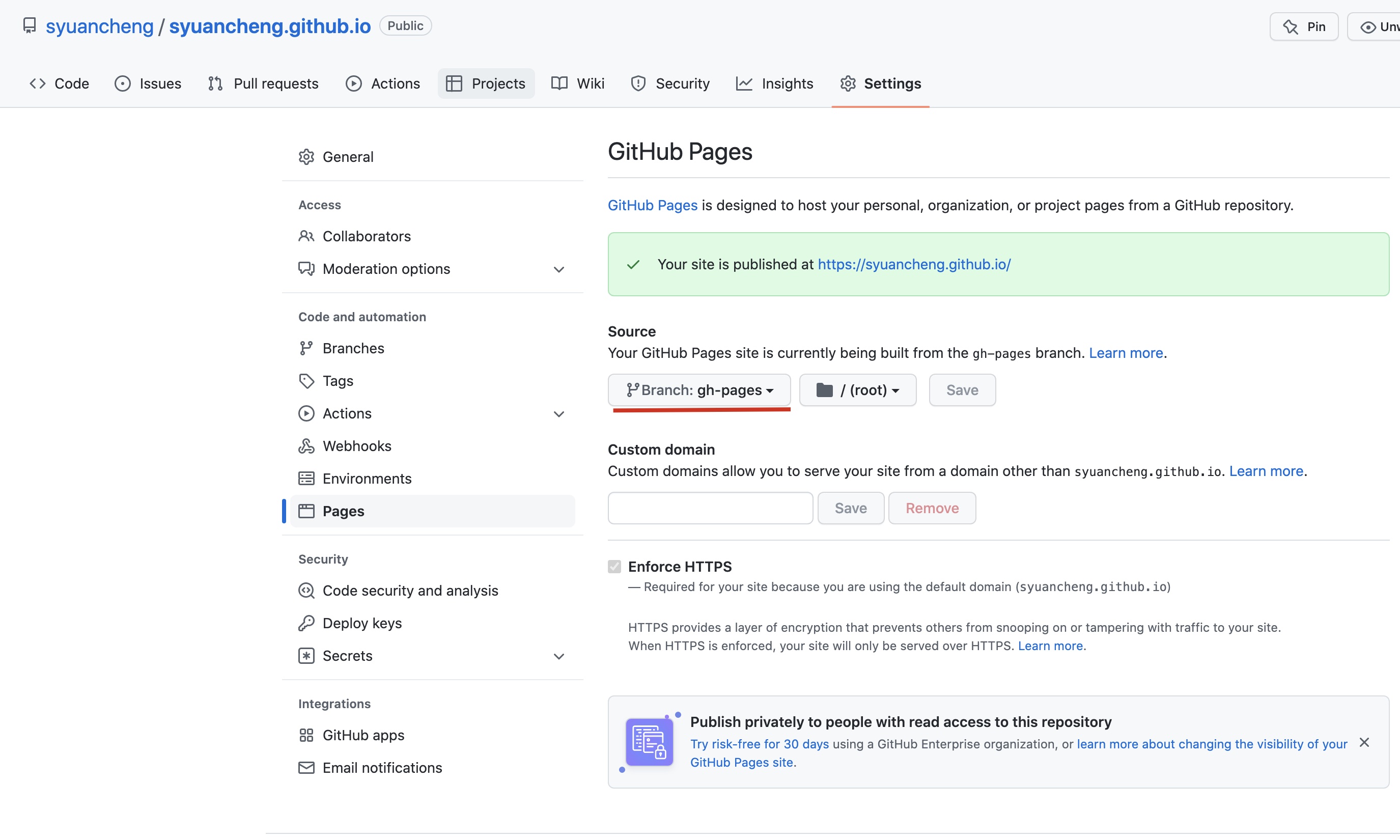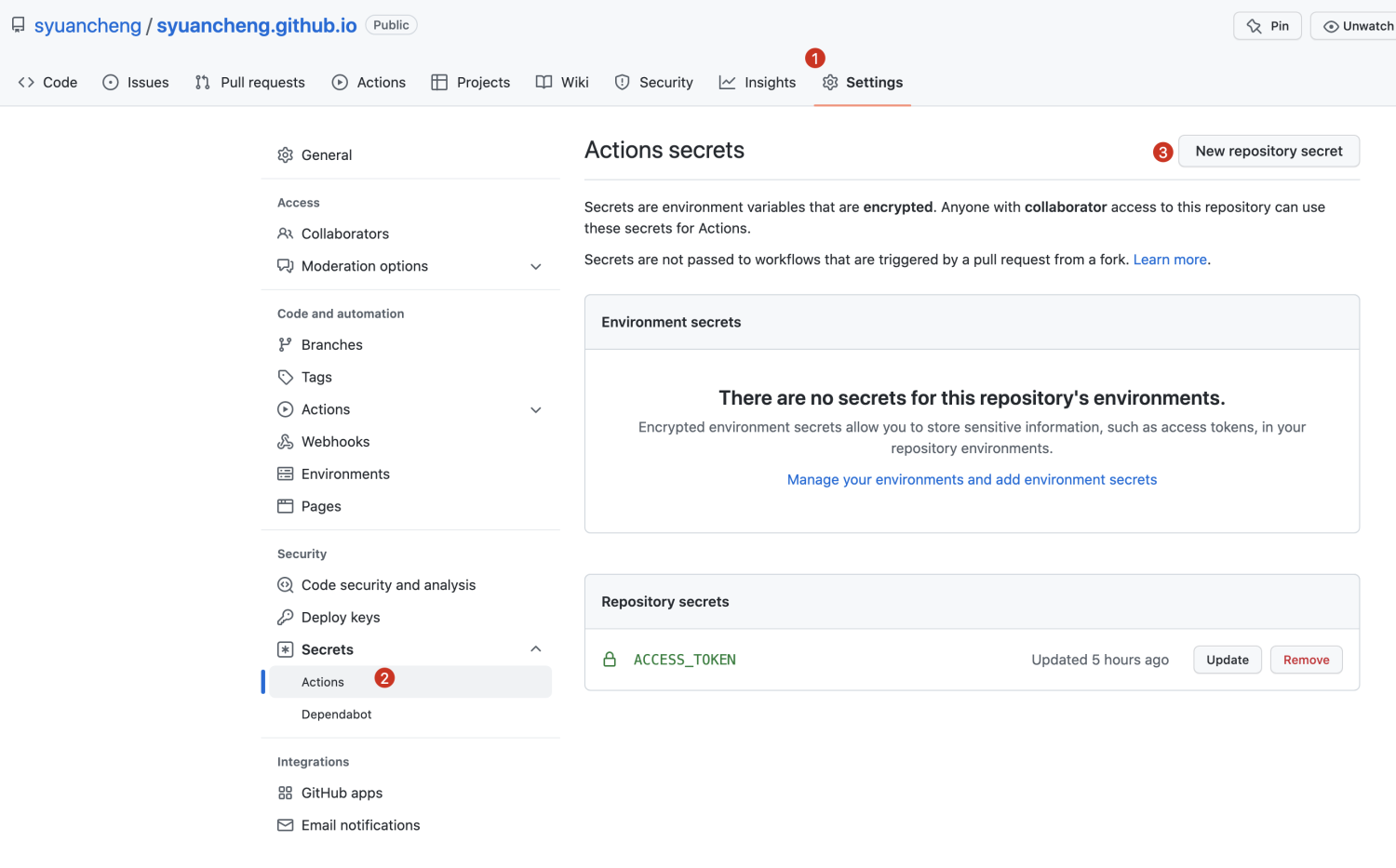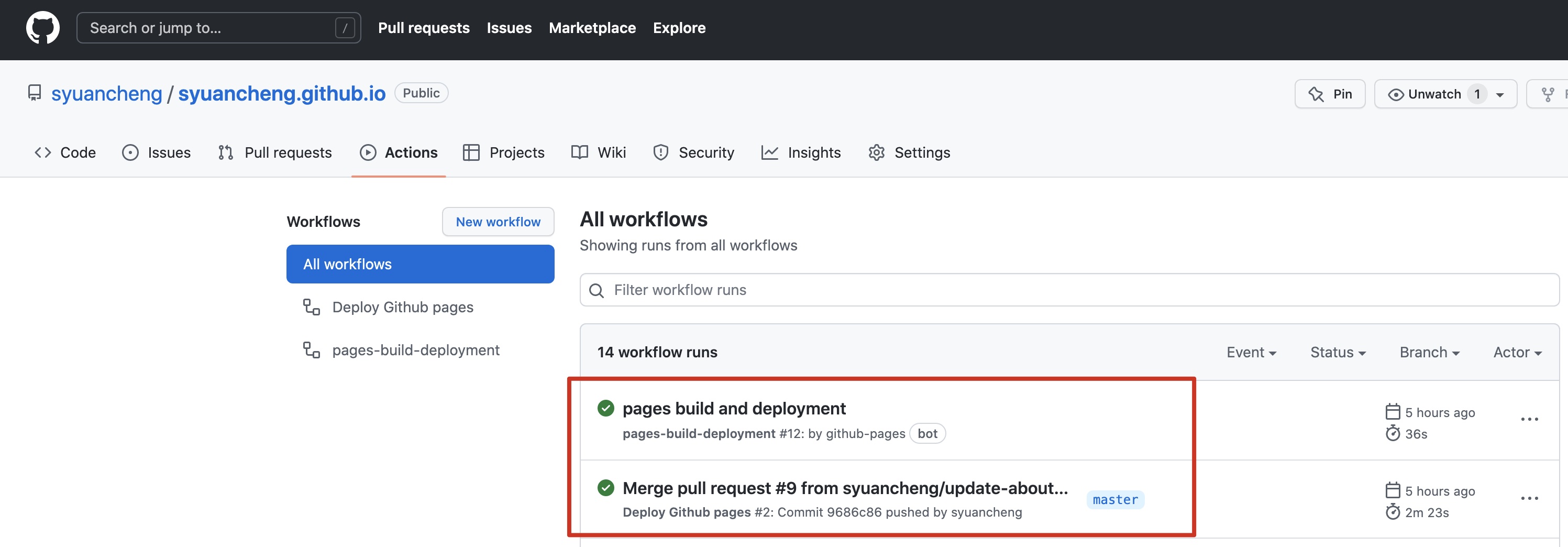Build blog by Docusaurus and deploy in Git Page
Docusaurus will help you ship a beautiful documentation site in no time. Building a custom tech stack is expensive. Instead, focus on your content and just write Markdown files.
Create a new Docusaurus site#
Install Node.js and create a new Docusaurus site:
npx create-docusaurus@latest my-website classicStart the site:
cd my-websitenpx docusaurus startOpen http://localhost:3000 and follow the tutorial.
Project Structure#
Assuming you chose the classic template and named your site my-website, you will see the following files generated under a new directory my-website/:
my-website├── blog│ ├── 2019-05-28-hola.md│ ├── 2019-05-29-hello-world.md│ └── 2020-05-30-welcome.md├── docs│ ├── doc1.md│ ├── doc2.md│ ├── doc3.md│ └── mdx.md├── src│ ├── css│ │ └── custom.css│ └── pages│ ├── styles.module.css│ └── index.js├── static│ └── img├── docusaurus.config.js├── package.json├── README.md├── sidebars.js└── yarn.lockProject structure rundown#
- /blog/ - Contains the blog Markdown files. You can delete the directory if you've disabled the blog plugin, or you can change its name after setting the path option. More details can be found in the blog guide
- /docs/ - Contains the Markdown files for the docs. Customize the order of the docs sidebar in sidebars.js. You can delete the directory if you've disabled the docs plugin, or you can change its name after setting the path option. More details can be found in the docs guide
- /src/ - Non-documentation files like pages or custom React components. You don't have to strictly put your non-documentation files here, but putting them under a centralized directory makes it easier to specify in case you need to do some sort of linting/processing
- /src/pages - Any JSX/TSX/MDX file within this directory will be converted into a website page. More details can be found in the pages guide
- /static/ - Static directory. Any contents inside here will be copied into the root of the final build directory
- /docusaurus.config.js - A config file containing the site configuration. This is the equivalent of siteConfig.js in Docusaurus v1
- /package.json - A Docusaurus website is a React app. You can install and use any npm packages you like in them
- /sidebars.js - Used by the documentation to specify the order of documents in the sidebar
Deployment#
1. change config file#
We have known that docusaurus.config.js is a config file that containing the site configuration, so we can change some values of the fields which is about what is shown in home page. apart from this, we have to change the following four attributes, this is very important for deploy.
url: 'https://syuancheng.github.io',baseUrl: '/',organizationName: 'syuancheng',projectName: 'syuancheng.github.io',2. config in github#
create a new branch gh-pages

3. set auto-deploy by github action#
create a .github/workflows/documentation.yml file in root folder. refer to github action hand bool by Ruan Yifeng
name: Deploy Github pageson: push: branches: - masterjobs: build-and-deploy: runs-on: ubuntu-latest steps: - name: Checkout uses: actions/checkout@master with: persist-credentials: false - name: Install and Build run: | npm install npm run-script build - name: Deploy uses: JamesIves/github-pages-deploy-action@releases/v3 with: ACCESS_TOKEN: ${{ secrets.ACCESS_TOKEN }} BRANCH: gh-pages FOLDER: build BUILD_SCRIPT: npm install && npm run buildset ACCESS_TOKEN in setting/action

We can check the workflow execution in action of this repo as some change is merged to master branch.

Go to https://syuancheng.github.io to check the result.
